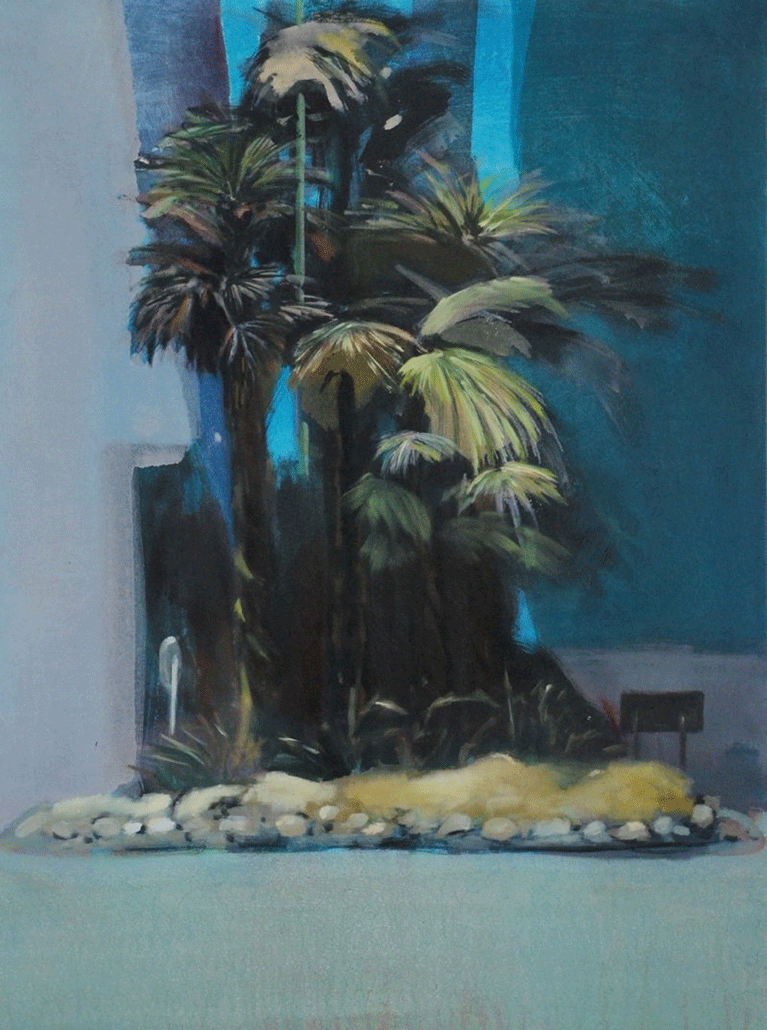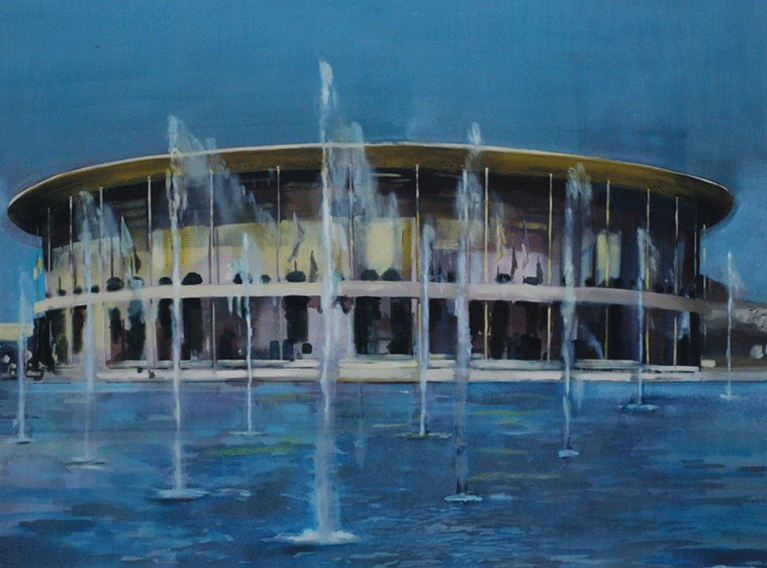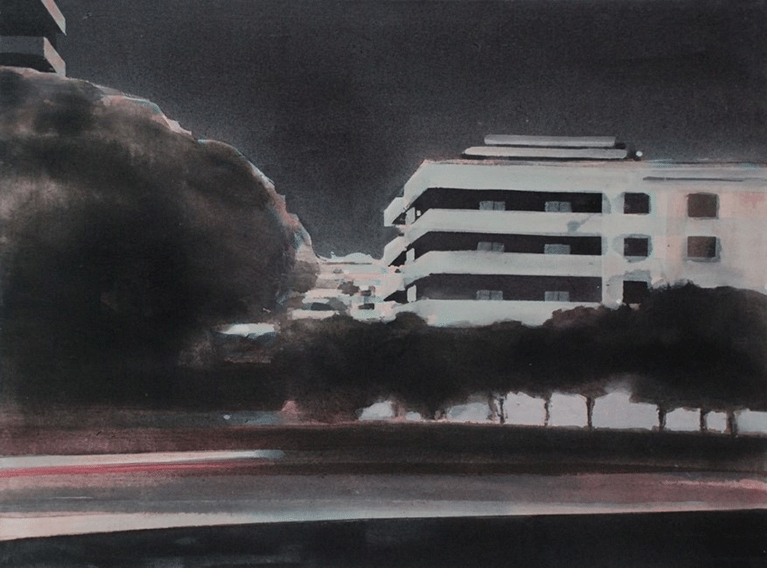
Pavilion
Artist
Graham Chorlton
Project duration
2015
Project overview
A collection of 14 paintings were included in the Pavilion exhibition. The title Pavilion was inspired by the US American Pavilion at the 1958 World’s Fair in Brussels (Expo 58). Having found a collection of photographs in a family photo album purchased at the flea market in Brussels, Graham subsequently began the underpinning research for the project, citing the following as secondary sources of influence: Jonathan Coe’s novel, Expo 58 (2013) and Michelangelo Antonioni’s feature film, The Eclipse (1963, UK Release). These references and the found Expo photographs have imagery in common – i.e., modernism in suburban areas, the constructed world of film and the extraordinary display of structures for Expo 58.
Graham first experienced the World’s fair as a child on the TV and at the library, whilst also experiencing the building of new high-rise housing estates near to his home in inner city Leicester. This informed his sense of modernist optimism, which feeds into his work. The work pays special attention to the modernist infrastructures and urban planning and how they inform our contemporary urban experience. Pavilion delves into the temporary architecture of the World Fairs, activated by found photographs in the Brussels Flea Market. Graham’s approach reworked the images as source material into his painting practice, giving new life to the temporary architecture of the Expo.
Pavilion was displayed at Cross Gallery, Francis St, in Dublin between 9th April 2015 and 2nd May 2015.
Project objectives
Drawing on a range of sources, this body of work aims to address the embodiment and experience of time in the suburban environment, allowing the spectator to encounter and explore their own identity through viewing these historical, temporary and everyday structures – through the painted experience.
The central objective is that the language of painting, via paint and stain, and the imagery produced, enables an exploration of our psychological relationship to place. An additional objective is to create a personal and expressive methodological model for painter and practice, which can make full use of the role of chance within the process of making, including stretching canvas, layering wash or stain, and of paint itself.







